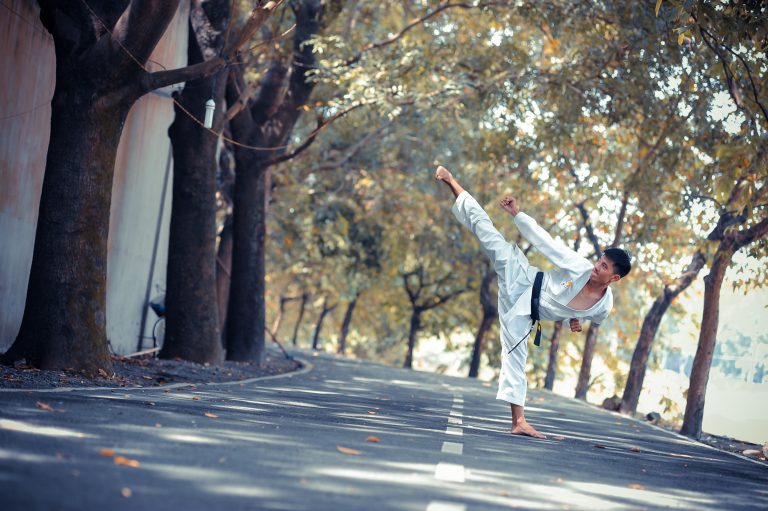Karate Belt Length: What You Need to Know
If you’re new to karate, you’ve probably noticed that karate belts come in different lengths. But did you know that the length of your karate belt can impact your performance and safety during training?
In this article, we’ll explore the importance of karate belt length, how to choose the right size, and other factors to consider when shopping for a karate belt.
Why Karate Belt Length Matters
Karate belts serve several functions during training and competition. They not only hold your uniform together but also indicate your level of experience and proficiency in the martial art. More importantly, they can impact your safety and performance.
A properly fitted karate belt allows you to move and breathe more easily during training. It also prevents the belt from sliding off when performing various techniques, which can cause distraction and discomfort. Additionally, a belt that is too long or too short can increase the risk of injury during sparring or grappling.
How to Choose the Right Karate Belt Length
When selecting a karate belt, it’s essential to choose the right size. Most karate belts come in lengths ranging from 100 cm to 320 cm, with the most common sizes being 220 cm and 260 cm. To determine the correct length, you’ll need to measure your waist and add a few inches to allow for tying the belt.
To measure your waist, stand straight and wrap a tape measure around your waist at the level of your belly button. Add four to six inches to this measurement to account for tying the belt. The resulting number should give you an idea of what size belt to purchase.
Keep in mind that the size of your karate belt may vary depending on the style of martial art and the uniform size you’re wearing. For example, a thick, heavyweight gi may require a longer or shorter belt than a thinner, lighter uniform.
Other Factors to Consider
Aside from length, there are several other factors to consider when choosing a karate belt. Here are some of the most important:
Material
Karate belts are typically made from cotton or polyester. Cotton belts are softer and more comfortable, while polyester belts are more durable and resistant to stretching.
Color
Karate belts come in a range of colors, each indicating a different level of proficiency in the martial art. Beginners typically start with a white or yellow belt and progress through the ranks until reaching black belt.
Width
The width of your karate belt can impact its tying ability and overall appearance. Most karate belts are between 4 and 5 centimeters wide, with wider belts being more common for advanced practitioners.
Frequently Asked Questions about Karate Belt Length
Karate is a martial art that is gaining popularity all over the world. But with all the different types of martial arts, it can be confusing when it comes to buying karate belts. In this post, we will answer some of the most frequent questions about karate belt length.
1. What is the standard length of a karate belt?
The standard length of a karate belt varies based on the size of the person. Typically, the length of the karate belt ranges from 240 cm to 320 cm. However, keep in mind that this can vary depending on the manufacturer, and sometimes it is best to measure the length of the belt yourself.
2. How do I measure the length of my karate belt?
To measure the length of your karate belt, lay it out on a flat surface and measure from one end to the other. Make sure the belt is flat and not twisted or folded. The length of your karate belt should be approximately twice the size of your waist. For example, if your waist size is 32 inches, then your karate belt should be around 64 inches.
3. How tight should a karate belt be tied?
When tying a karate belt, it should be snug but not too tight. You should be able to fit two fingers between the belt and your waist. If the belt is too tight, it can restrict your movement and breathing, which can affect your performance.
4. Can I wash my karate belt?
It is generally not recommended to wash your karate belt. The reason for this is that the belt represents your progress and achievements in karate. Washing the belt can wash away the hard work and effort that you have put into your training. In addition, washing the belt can cause it to lose its shape and color. If your belt becomes dirty, simply air it out or gently brush it with a soft cloth.
5. Do I need to buy a new karate belt every time I advance to a new level?
No, you do not need to buy a new karate belt every time you advance to a new level. In fact, it is common practice to keep the same belt and simply add colored stripes or bars to represent your new rank. However, some schools or instructors may have their own traditions or requirements regarding belts, so always check with them before making any changes.
6. Can I wear someone else’s karate belt?
No, you should never wear someone else’s karate belt. The belt represents their hard work and dedication to the martial arts, and it is disrespectful to wear someone else’s belt. In addition, wearing someone else’s belt can be seen as dishonest, as it suggests that you have achieved a rank that you have not actually earned.
7. Why do some karate belts have stripes or bars on them?
Stripes or bars on a karate belt represent the student’s progress and rank within the martial arts. Typically, a student will earn a new stripe or bar for every few months of training or for passing a specific test or grading. As the student progresses, they may earn more stripes or bars until they eventually reach the next level.
In conclusion, karate belt length can be confusing for beginners, but by following these guidelines, you can ensure that you have the right belt for your size and experience level. Remember to always check with your instructor before making any changes to your belt or uniform, and always respect the traditions and requirements of your school.
How to Determine the Correct Length for Your Karate Belt
Karate is a martial art that involves precise movements, focus, and discipline. One of the most recognizable aspects of karate is the different colored belts worn by practitioners, symbolizing their level of skill and progression through the ranks. It is important to wear the correct belt length to ensure comfort and functionality during training. In this guide, we will walk you through the steps of determining the correct length for your karate belt.
Step 1: Measure Your Waist
The first step in determining the correct length of your karate belt is to measure your waist. Use a tape measure to determine your waistline’s circumference, which is the area above your hips and below your rib cage. Ensure that you measure accurately and record the measurement in inches.
Step 2: Choose Your Belt
There are several types of karate belts available, and each has different lengths. When selecting a karate belt, be sure to choose a belt that is appropriate for your level of skill. Choosing the correct belt length is crucial to ensure that it is not too long or too short, which could impact your performance during training.
Step 3: Find the Appropriate Belt Length
Once you have chosen your belt, it is time to find the appropriate length. The general rule of thumb is to select a belt that is twice your waist size, plus an additional 10 inches. For example, if your waist is 30 inches, you would need a 70-inch belt. This size would allow you to tie a secure knot and provide enough excess length to drape over your shoulder.
Step 4: Adjust Your Belt
Adjusting your karate belt may require a bit of trial and error to ensure that it is secure and comfortable. Begin by wrapping the belt around your waist, ensuring that the tag end is on your right side. The tag end should be at least six inches longer than the other end. Pull the tag end through the loop that has formed, ensuring that the belt is snug but not too tight.
Next, wrap the tag end around the other end of the belt, forming a knot. Ensure that the knot is tight, but not so tight that it is uncomfortable. Finally, adjust the belt to ensure that it is even and the knot is centered on your waist.
Additional Tips
– When tying your belt, ensure that it is not too tight, as this can limit your range of motion during training.
– Be sure to wash your karate belt regularly to keep it clean and free from bacteria.
– As you progress through the ranks and acquire new belts, be sure to adjust the length accordingly.
Conclusion
Wearing the correct length of karate belt is crucial to ensure that you are comfortable and able to perform at your best during training. By following the steps outlined in this guide, you can determine the appropriate length for your belt accurately. Remember to choose a belt that is appropriate for your level of skill and to adjust the length as you progress through the ranks. With the correct belt, you can focus on perfecting your technique and advancing through the ranks with ease.
Inhaltsverzeichnis






